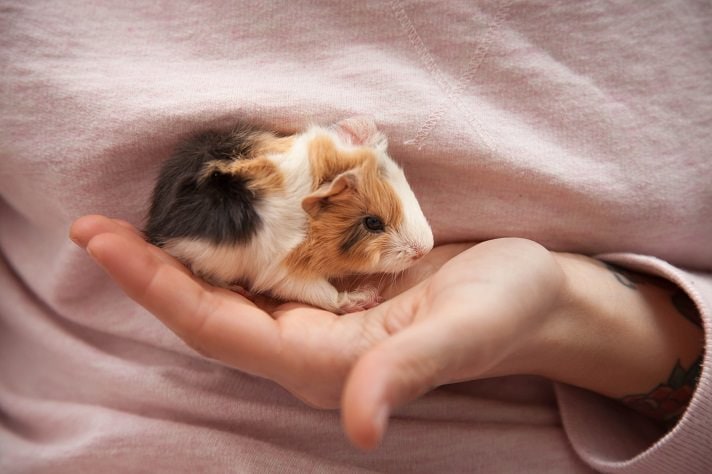
A Comprehensive Guide to Nurturing Baby Guinea Pigs
Introduction
Guinea pigs, also known as cavies, are adorable and social creatures that make wonderful pets. However, caring for baby guinea pigs requires special attention and knowledge to ensure their health and well-being. This comprehensive guide will provide you with all the essential information you need to nurture your little furballs from birth to adulthood.
Preparing for Baby Guinea Pigs
- Housing: Baby guinea pigs require a spacious cage that provides ample room for movement and play. The cage should be at least 24 inches long by 18 inches wide by 12 inches high for a single baby and larger for multiple babies.
- Bedding: Provide a soft and absorbent bedding material such as fleece, hay, or shredded paper. Avoid using cedar shavings, as they can be harmful to guinea pigs’ respiratory systems.
- Food: Baby guinea pigs need a diet rich in vitamin C and calcium. Provide them with unlimited access to high-quality hay, fresh vegetables, and a commercial guinea pig pellet.
- Water: Ensure constant access to fresh, clean water in a water bottle or bowl.
Caring for Newborn Guinea Pigs
- Birth: Guinea pigs give birth to live young, called pups. The average litter size is 2-4 pups.
- Nursing: Pups are born with their eyes open and are able to walk and nurse within a few hours. They will nurse from their mother for the first 3-4 weeks of life.
- Temperature: Baby guinea pigs are unable to regulate their body temperature, so it is crucial to provide a warm and draft-free environment. Use a heating pad or heat lamp to maintain a temperature of 85-95°F (29-35°C).
- Handling: Handle newborn guinea pigs gently and only when necessary. Avoid touching their eyes or ears.
Weaning and Socialization
- Weaning: Around 3-4 weeks of age, pups will begin to wean from their mother’s milk. Gradually introduce solid foods into their diet.
- Socialization: Guinea pigs are social animals and should be kept in pairs or groups. Introduce new guinea pigs gradually and under supervision.
Feeding Baby Guinea Pigs
- Hay: Hay should be the foundation of a baby guinea pig’s diet. Provide unlimited access to high-quality hay such as timothy, orchard, or oat hay.
- Vegetables: Offer a variety of fresh vegetables daily, including romaine lettuce, spinach, bell peppers, and carrots.
- Pellets: Commercial guinea pig pellets provide essential nutrients. Feed 1/8-1/4 cup of pellets per day.
- Vitamin C: Guinea pigs cannot produce their own vitamin C, so it is essential to provide them with a daily supplement.
Health and Hygiene
- Grooming: Baby guinea pigs do not require regular grooming. However, you can gently brush their fur to remove loose hair.
- Nail Trimming: Trim their nails regularly to prevent overgrowth.
- Bathing: Guinea pigs do not typically need baths. However, if they become soiled, you can gently wipe them down with a damp cloth.
- Veterinary Care: Schedule regular veterinary checkups to ensure your baby guinea pigs’ health and prevent potential health issues.
Common Health Issues
- Respiratory Infections: Guinea pigs are prone to respiratory infections, especially if exposed to cold or drafts. Symptoms include sneezing, coughing, and nasal discharge.
- Skin Problems: Ringworm and mites are common skin conditions in guinea pigs. Symptoms include hair loss, itching, and crusty skin.
- Gastrointestinal Issues: Diarrhea and constipation can occur due to dietary changes or infections.
- Dental Problems: Guinea pigs’ teeth grow continuously, so it is important to provide them with chew toys to prevent overgrowth.
Signs of Distress
- Wheezing or coughing: Respiratory distress
- Lethargy or loss of appetite: Illness or pain
- Discharge from eyes or nose: Infection
- Diarrhea or constipation: Gastrointestinal issues
- Excessive scratching or biting: Skin irritation
Conclusion
Caring for baby guinea pigs is a rewarding experience that requires patience, knowledge, and a commitment to their well-being. By following the guidelines outlined in this comprehensive guide, you can provide your little furballs with the optimal environment and care they need to thrive and bring joy to your life for many years to come. Remember to consult with a veterinarian regularly to ensure their health and address any concerns promptly.
